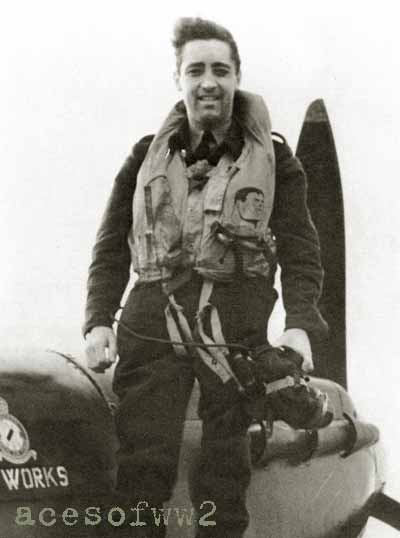|
| A form dated 21 November 1943 credits him with : 700 hours on Spitfires (Mks.I, II, V, VIII and IX), 80 hours on Harvards, 50 hours on Finches, 20 hours on Yales, 5 hours on Magisters & 2 hours on Master Is |
Time includes 40 hours at No.57 OTU & Another form gives him : |
An application to be a civilian pilot states that by |
_________________________________________________
Toronto Flyer Avenges RAF Ace Finucane Killed Off French
Coast
P/O F. A. Aikman Gets Nazi Machine Gunners After
Million-to-One Shot Fatal
London, July 17, 1942 (Advance)—Wing Cmdr. Brendan (Paddy) Finucane, RAF ace, credited with destruction of 32 German planes, was killed last
Tuesday in a crash off the French coast after a German machine-gun bullet
disabled his Spitfire, the Air Ministry announced tonight.
It was a "million to one chance" shot which ended the career
of the 22-year-old ace as he was leading his wing during the largest mass
attack yet carried out on German targets in France. The bullet struck
the Spitfire's radiator.
The motor was turning too slowly for Finucane to gain height so he opened
the sliding hood over the cockpit, took off his helmet and attempted to
set his plane down on the sea. The Spitfire "sank like a stone,"
carrying Finucane to his death.
The No. 2 leader of the wing, P/O F. A. Aikman, 23, of Toronto, avenged
the death of the Irish ace in his own ground strafing attack on the German
machine-gun post, set up on a spit of land, Pointe du Touquet, facing
the English Channel from whence the RAF men came.
Aikman said the wing was flying at "naught feet" when it skimmed
across the French coast and that the airmen were almost on the machine-gunners
before Finucane realized it. The machine-gunners opened up with point-blank
fire.
"As I went in," Aikman related, "I took a crack at the
gun post. When the dust settled down a little there was nothing to be
seen on the sand and I guessed my fire blew that post to blazes."
_________________________________________________
This Is It
Paddy Finucane Leading R.A.F. Against Nazis Dies in Channel
LONDON. July 17, 1942 (A.A.P.) - All Britain has heard with intense regret the news of the death of the famous Irish airman Wing-Commander Brendan "Paddy" Finucane. This 21-year-old ace, the youngest wing commander of the Royal Air Force and the leader of the first Australian squadron in Britain was killed when he endeavored to crash-land his Spitfire in the English Channel ten miles from the French coast, after his machine had been hit by a German machine-gun posted on the beach near Pointe du Touquet.
Wing-Commander Finucane was leading his wing during the largest mass attack that fighters have made so far against targets in France. He was flying low over the machine-gun post when a shot penetrated the Spitfire's radiator.
While Wing Commander Finucane was leading his wing out to the attack, his station commander was “listening in” to the radio telephone conversation between the Spitfire pilots. He said Finucane did not know he was hit until his No. 2 told him.
Finucane went on nevertheless, telling his unit: “Take the right target, chaps. Here we go.”
Soon afterwards he said his engine temperature was going up and that he was coming out of France. He continued to talk calmly over the radio as he was coming home, and his last words, probably as his engine stopped, were. "This is it, chaps.”
Finucane's No. 2 was a Canadian Pilot-Officer F. A. Aikman, who avenged his wing-commander by attacking the machine-gun post which was perched on a ridge of sand, and manned by two soldiers. He said two Nazi soldiers opened up at point-blank range, and the first burst penetrated Finucane's starboard wing and radiator. Pilot-Officer Aikman believed his fire then blew the post to pieces. Finucane obviously was not hurt by the Nazi shot, and he was flying about 10 feet over the sea just before he crashed. Apparently he had tried to put as much distance as possible between himself and the Nazis so as to have a better chance of being rescued by our boats.
Aikman, who was flying close alongside, saw Finucane, obviously unhurt, open his hood, remove his helmet and put down in the sea.
The crash must have knocked him unconscious, for his comrades circled the sea for a long time afterwards, but all they saw was a slowly widening streak of oil which floated on the waters of the Channel.
Pilot-Officer Aikman added:—"I circled at about 5000 feet and watched, but all I saw was a streak of oil. The whole thing was a miserable piece of bad luck. It was a shot in a million that hit the radiator. Thus passed ‘Paddy’ Finucane, unbeaten by the Luftwaffe. It was a ground shot that got him.”
Finucane was a breezy air ace, who had destroyed more than 30 planes, painted a thorned shamrock on his Spitfire and nicknamed it “Wheezy Anna."
_________________________________________________
Mother Glad Son Avenged Finucane
TORONTO, July 18, 1942 — (CP) — Mrs. F. H. Aikman of Toronto today described as "grand news" the announcement that her son, Pilot Officer Alan Aikman, 23, avenged the death of Wing Cmdr. Brendan "Paddy" Finucane, British ace who was killed Wednesday off the French coast.
Finucane, who was credited with destruction of 32 German planes, was killed in a crash after a chance Nazi machine-gun bullet disabled his Spitfire. Aikman ground-strafed the machine gun post.
"That part is grand news," said Mrs. Aikman. "That part about Alan getting him. How glad I am. But it is a great pity about Finucane. I’ve heard about him so often it almost seems as though I know him."
_________________________________________________
Four Bombers Downed By F/O Aikman, TorontoBy Ross MUNRO at an R.A.F. Fighter Base
on the Tunisian Front. |
||
The Canadians are operating with British, Australian and New Zealand
airmen, taking part in air battles over Northern Tunisia and sometimes
right over Bizerte and Tunis. They are making daylight sweeps along
the enemy lines and having fierce dustups with Axis bombers and
fighters they intercept.
Top Canadian pilot of this base is F/O Alan Aikman of Toronto, credited with destroying four bombers. Aikman and F/O Allan Turnbull of Prince Albert, Sask., were in the first squadron landing at Maison Blanche airdrome in Algiers Nov. 11. Turnbull is credited with the destruction of one bomber. Both men were with a squadron when it occupied a forward airdrome several hours ahead of British troops advancing along the coastal road in the first phase of the Northwest African campaign. Take Over Airdrome |
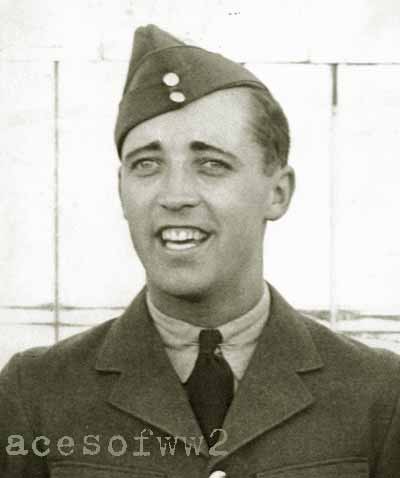 Alan Aikman |
|
Italians "Bloody Fools"
Without being boastful the Canadian and other pilots here feel they have
an edge on the Axis airmen, particularly the Italians who, one pilot said,
"Act like a lot of bloody fools.'"
"When seven or eight Eyties come over they are lucky if one gets
back," he added.
Apart from the mud and other discomforts, the Canadians appear to be liking
the campaign. They are living in French and native villages several miles
from the airdrome and some are bunked at requisitioned cafes, police stations
and even a distillery. They all kept telling me they just wanted their
families at home to know they were all right.
Mother Is Pleased |
 Mrs. F.H. Aikman |
F/O Aikman figured in the news before, in July, 1942, as a member of the squadron of the famed Brendan (Paddy) Finucane, who shot down 33 German planes before plunging to his death in the English Channel as the result of a "million-to-one" chance shot from a German machine-gun post during a mass air assault on Occupied France. Then a pilot officer and No. 2 leader of the wing, Aikman avenged the Irish ace of the R.A.F. by smashing the enemy machine-gun post.
_________________________________________________
Local Flyer, Bill Olmsted, One of Canadians
Who Are Doing a Good job in Tunisia
Increasing Number From Canada Seeing Action on Desert Front
(By Ross Munro, Canadian Press War Correspondent)
With the RAF in North Africa, 25 Feb. 1943 – (CP Cable) – An increasing
number of Canadian fighter pilots are in action on the Tunisian front
and squadron leader Jimmy Walker of Edmonton,
now commands a Spitfire squadron, the first Canadian-led RAF squadron
in North Africa.
Walker has just been awarded a bar to his Distinguished Flying Cross.
His citation reads: “This officer has destroyed four enemy aircraft
and damaged four others since his arrival in North Africa. His untiring
efforts and leadership merit the highest praise. His example has been
an inspiration to other pilots in his wing and has contributed greatly
to the wing success in the air.”
Flying with Walker at different times during the campaign have been several
other Canadians who have been knocking off enemy aircraft.
Toronto Man Promoted
Alan Aikman, of Toronto, has been promoted from the rank of flying officer
to that of flight lieutenant and he now is leading a flight of Spitfires.
Aikman flew No. 2 to the famous Irishman, Paddy Finucane,
and was with him the day he was shot down off the French coast by anti-aircraft
fire. The Torontonian has a score of five enemy planes destroyed in North
Africa. Recently he shot down a Focke-Wulf 190 in an air fight over the
Mediterranean. The German plane crashed on the shore.
Aikman said Spitfires have been doing a large number of sweeps recently
to harry the Germans on the northern sector of the front. "The Jerries
don't seem to want to mix it up with us," he said, "Sometimes
we get a dozen or 15 in the sky but they sheer off when we get in at them.
So life is a little dull at times these days."
Another high-scoring Canadian is P/O Harry (Junior) Fenwick,
of Leamington, Ont., who has destroyed five of the enemy and damaged five
more, besides having a probable to his credit. He wears the ribbon of
the Distinguished Flying Cross.
Flying in the same squadron as Fenwick are six other Canadians: Sgt. Louis
Hamilin, Sgt. Donald Rathwell, and P/O Calvin (Pep) Peppler, all of Winnipeg;
F/Sgt Douglas Husband, of Toronto; F/O
Bill Olmsted, of Hamilton, Ont., and Sgt. John
Olsen, of Kirkland Lake, Ont.
With another squadron that flies on sweeps with Fenwick and his crowd
are P/O Jim Woodill, of Halifax, F/L Glen Lynes, of Montreal,
who has just been promoted from the rank of pilot officer and leading
a flight like Aikman; P/O C. F. Sorensen, a Dane from Kingston, and P/O
Howard McMinniman, of Fredericton.
Flying with still another R.A.F. squadron that included a half-dozen Canadians
is F/O R. W. Robertson, of Sydney, N.S., who has been through a couple
of recent scraps over Tunisia. On a dawn patrol he ran into seven Nazi
fighters and engaged them immediately. He took on three at first and headed
straight at them. At less than 100 yards he squirted lead at one and saw
it break away and dive for the ground, riddled with bullets. Troops on
the ground saw it crash and Robertson got the credit for destroying it.
He was not finished, though. He chased after the rest and damaged two
before returning to his base in time for breakfast. Robertson flies a
Spitfire with the name Bluenose painted on its nose. He has done almost
150 operational hours as a fighter pilot. .
A great friend of a large number of Canadian pilots out here is F/Sgt
Tony Jonsson, the only Icelander in the R.A.F., who was recently awarded
the Distinguished Flying Medal. His score is three destroyed, one probable
and one damaged.
_________________________________________________
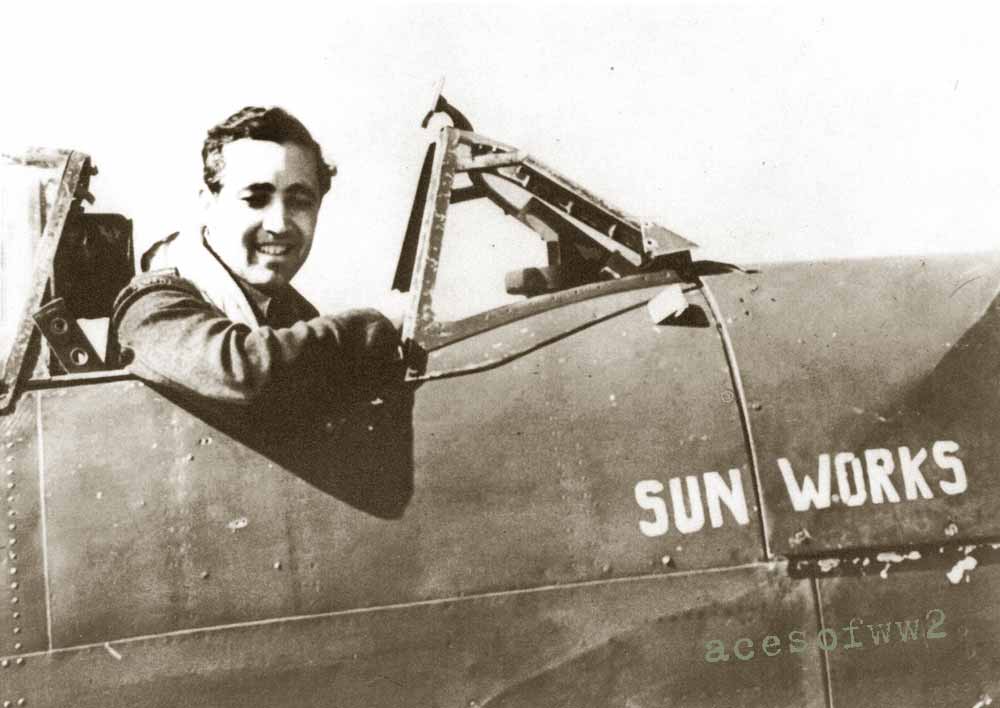
Toronto RCAF Man Honored for Gallantry
Ottawa, 25 Feb. 1943 (CP) – The RCAF today announced the award of the Distinguished Flying Cross to F/O Frederick Alan Aikman, son of F. H. Aikman of 178 Albertus Avenue, Toronto.
Now Leads Spitfires
A cable from North Africa on Feb. 25, reported that Aikman had been promoted
to the rank of flight lieutenant, and was now leading a flight of Spitfires.
"He has a score of five enemy plants destroyed in North Africa, (Ross)
Munro wrote, "and recently he shot down a Focke-Wulf 190 in a big
air fight over the Mediterranean coast." Munro quoted F/L Aikman
as remarking that "The Jerries don't seem to want to mix it up with
us. Sometimes we get a dozen or 15 in the sky, but they sheer off when
we get in at them. So life is a little dull at times these days."
The 22-year-old pilot arrived in Algeria last November, his father, F. A.
Aikman, said last night. "He is quite reticent about his accomplishments
and we get more news from newspapers about him than from anywhere else."
F/L Aikman enlisted in the summer of 1940 and received his wings at
Camp Borden. Aikman was born in Toronto and attended John Fisher School
and North Toronto Collegiate.
_________________________________________________
AIKMAN, F/O Frederick Alan (J7460) - Distinguished
Flying Cross - No.154 Squadron
Award effective 19 February 1943 as per London Gazette of that date,
The Globe & Mail dated 25 February 1943 (above) &
AFRO 513/43 dated 26 March 1943
This officer has taken part in a large number of sorties over enemy territory from England. Since his arrival in Algeria he has destroyed three enemy aircraft and shared in the destruction of three others. F/O Aikman is an exceptionally skilful pilot and a fine section leader who has always shown the greatest keenness to engage the enemy.
_________________________________________________
CANADIANS BAG ENEMY AIRCRAFT IN MIDDLE EAST
Play Share in Big Allied Sorties in Battle of Tunisia
CONSTANT FLYING
An Advanced Tunisian Airfield, 12 April 1943 - (Delayed) - (CP Cable) - Three Axis aircraft have fallen before the guns of Spitfire fighters piloted by Canadians in the last two days of Tunisian air fighting, in which a record number of sorties was made, it was disclosed today.
S/L J. E. Walker, D.F.C. and bar, of Edmonton, veteran of the sky battles of Britain and Russia, raised his North African score to 8.5 by downing a Messerschmitt 109 on April 11 and a dive-bomber today. He was obliged to bail out after downing the dive-bomber, but hitch-hiked back to his base in time for lunch and led another raid the same afternoon.
On April 11, F/L Fred Aikman, D.F.C. of Toronto, destroyed a Messerschmitt 109. At the same time, W/O Raymond Gourdeau, of Quebec City, a member of Walker's squadron, had to bail out when his Spitfire was hit by flak, but he was back with his squadron today with only slight injuries.
Walker destroyed his Messerschmitt during a tangle with five German aircraft and bagged the Stuka when he and other members of his squadron piled into a formation of 14 dive-bombers and concentrated their fire on five of them.
"I saw them get into line abreast and prepare to peel off and dive," Walker said. "I went right through them, giving each one a squirt and definitely scoring strikes on the first. Sometime during the maneuver, my Spit was hit, but I did not realize it at the moment. I gave one last Stuka an extra long burst and down he went, flaming.
"I then realized I had been hit and my kite burst into flames. I decided there was no longer any time, so I dived out and pulled my ripcord. It was some relief when I saw the pilot chute open and then felt a tug which meant the main chute had opened. It was my first jump, and, although it was pleasant, my last, I hope. That chute seems awfully small against the big sky."
He said the funniest thing about the whole day occurred after he had landed and was busy pulling in his chute. Some soldiers ran up to him with fixed bayonets and said disgustedly: "Damn it sir, we thought you were a Hun."
Aikman's proudest possession at the moment is a German Africa Korps cap, and the young Canadian preferred to talk about it, his squadron mates, the new dispersal hut he is helping to build — anything except his own exploits. He is a flight commander and one of the most popular members of Walker's outfit.
Gourdeau, the only French-speaking Canadian pilot serving in this advanced area, joked about his experience and could not decide whether he enjoyed the parachute descent, which qualified him for membership in the Caterpillar Club. He landed in no-man's land with slight injuries and set out afoot for his own lines. When he reached a deep river he hired a horse and an Arab for 1,000 francs and, mounted behind the Arab, rode across the river and into the British, lines. He spent the night with the army and returned to base today.
_________________________________________________
Canadian Flyers to Fore In North African Victory
(By F/L L. C. Powell) Algiers, May 11, 1943
— (CP) — Many Canadians serving with R.A.F. squadrons "stooged"
overhead as victorious elements of the ground forces entered Tunis and
Bizerte, the two main objectives in the North African campaign. The greatest
air assault any army has ever had to withstand blasted the way for the
big Allied push. Day after day, fighters and bombers, struck again and
again at enemy positions and troop concentrations, at the same time clearing
the sky of all aerial opposition.
R.C.A.F. pilots reported hits on long columns of enemy transport and troops
along the densely-packed road leading to Tunis. Among the fighter pilots
who have played a brilliant part throughout the campaign are S/L
Jimmy Walker, D.F.C. and Bar, Edmonton; S/L
George Hill, Pictou, N.S.; and F/L Fred (Butch)
Aikman, Toronto, a youthful veteran of the air war.
Others Seeing Action
Other Canadian fighter pilots who have been in action on this front include F/O George Keith, Taber, Alta.; F/O Bill Draper, Toronto; P/O Harry (Junior) Fenwick, D.F.C., of Sioux Lookout, Ont., and F/S Albert (Tommy) Thomas, Winnipeg.
How many aircraft have fallen to Canadians it is impossible to say at present, but Walker and Hill have shot down 19 between them in this theatre of war. The boys who are on "jobs" these days are always anxious to get back to base and catch up with the general news on what is going on.
Enemy air opposition, waning as the intensity of the final offensive mounted, dropped to new low in recent days. A Canadian pilot with a Boston squadron reported seeing five fighters below him. They showed no desire to join action however, and flew off at low levels.
British soldiers paid high tribute to the work of the air force in the campaign and one young Canadian pilot, referring to the enemy and paraphrasing Prime Minister Winston Churchill, said, "Never was so much pounding taken by so few in so short a time."
Pilots returning from trips over former Axis "hot spots" report encountering no flak at all. After flying over one of these enemy positions a week ago one Winnipegger said jokingly, "Flak was so thick I had to fly on instruments."
_________________________________________________
Tunisia Victors - R.C.A.F. Men Among Aces Topping List
By Flt. Lt. LES POWELL, R.C.A.F.
Algiers, May 29, 1943 - (CP) - Royal Canadian Air Force personnel played
a big part in the aerial domination achieved by the Allies during the
closing stages of the Battle of Tunisia, for they were — as they are
everywhere — plentifully sprinkled among R.A.F. squadrons, and even
a United States Army Air Force Mitchell squadron.
They flew Spitfires, Hurricanes, Bostons, Beaufighters, Wellingtons,
and Hudsons
Two of the highest scoring fighter pilots in the campaign were Canadians,
both leaders of Spitfire squadrons. They are S/Ls Jimmy Walker,
D.F.C. and Bar, of Edmonton, and George Hill, D.F.C.
of Pictou N.S. They destroyed a score of enemy aircraft between them,
plus innumerable probable and damaged, and brilliantly lead their units
during the final decisive phase of the battle.
Not far away was another Canadian fighter ace, F/L Fred Alan (Butch)
Aikman, D.F.C., of Toronto, while a short distance away, - “cross
the waddi and turn left at the second eucalyptus" - was a squadron
with five Dominion fliers, including another D.F.C., P/O Harry (Junior) Fenwick of Leamington, Ont.
Listowel Flier a Leader
In addition to carrying out fighter sweeps and ground strafing, these
fighter boys acted as protection for bombers, Flying Fortresses, Mitchells
and Bostons. They liked especially to escort a particular squadron of
Bostons, for the leader, W/C Jimmy Thompson, D.F.C., is a Canadian
hailing from Listowel, Ont. whose men include many Canadians.
Providing convoy protection through the Mediterranean was tremendously
important work, and there, too, were found Canadians. F/L Ted Bishop
of Ottawa leads a flight which includes some of his countrymen. Another
Hurricane squadron nearby included F/O John (Slim) Wilson of Saint John,
N.B.
One of the most successful preludes to victory was the bombing of the
docks and harbors of Tunis and Bizerte, which stopped supplies for the
Axis. Giant Flying "Forts" of the U.S.A.A.C. went over in daytime,
while Wellingtons took over by night. Here again one found R.C.A.F. personnel
serving.
There were F. M. (Bill) Rublee, 20-year-old 'Wimpey' pilot from Allan,
Sask., a veteran of raids on important Tunisian ports who first learned
to fly a Waco 10 he and a pal bought, four years ago back home, and Sgt.
Jay Lepine, a wireless operator-air gunner from Ste. Anne de Bellevue,
Que. There is also Bill Webb, a pilot officer from Windsor, Ont., and
the squadron's Navigation officer, F/L O. H. Morgan, of Kamloops,
B.C. is a veteran of more than a score of trips over enemy targets.
The Mediterranean Fight
Keeping the Mediterranean clear of submarines is the job of Hudsons of
Coastal Command and only recently there was a victory over a large Axis
submarine by a crew which included Sgt. Rod Blair, a wireless operator-air
gunner from Moose Creek, Ont. Other Canadians with the squadron include
Sgt. Doug Berlis and his all-Toronto crew of Sgts. W. L. Allen and W.
J. McKeague.
Not only in the air but also on the ground did Canadians serve in North
Africa. There are LACs, Roy Corney, Ridgeway, Ont., and Alan Harris of
Ottawa, radio mechanics with the fighter squadron commanded by Walker,
Cpl. Clary Brown, Mount Forest, Ont., and many others, all doing important
jobs — jobs which helped to drive the Axis out of North Africa,
except for 100,000 or so we are keeping as "guests."
Now the Canadians are sitting around wondering what's to happen next and
hoping that it will happen soon. They are all eager to get on with the
job, finish it up completely and get back to Canada.
_________________________________________________
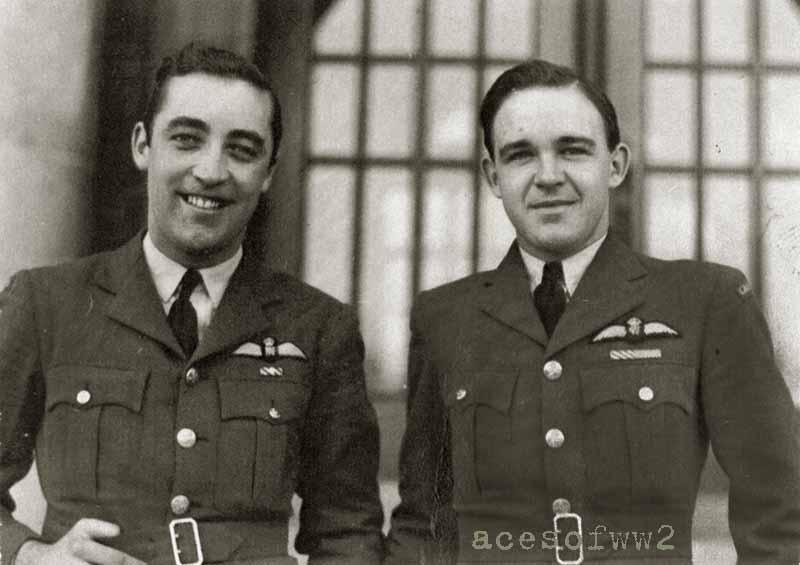
Aikman & Don Morrison probably after their investiture (Aikman - Bar to DFC, Morrison - DFC to go along with his DFM)
‘KEEN FIGHTER,’ WINS BAR TO DFC
F/L Alan Aikman Has Eight Enemy Aircraft
to His Credit
"A keen and tenacious fighter with a rare zest for battle”
reads the citation announcing F/L Alan Aikman, 24, of Albertus Ave., has been awarded a bar to the D.F.C.
he received in February. Credited with destroying eight enemy aircraft, F/L Aikman is
now stationed in the central Mediterranean area, where several of his
successes have been scored.
"In addition to the eight destroyed, he has several probables to
his credit," said his mother, Mrs. F. H. Aikman. "He has written
us about some of them."
F/L Aikman was the flier who in 1942 "blew to blazes"
the machine-gun post that downed famed RAF Ace Paddy Finucane.
_________________________________________________
AIKMAN, F/L Frederick Alan (J7460) - Bar to DFC - No.154 Squadron
Award effective 16 October 1943 as per London Gazette dated 19 October
1943 &
AFRO 2507/43 dated 3 December 1943.
Flight Lieutenant Aikman is a keen and tenacious fighter who has destroyed at least eight enemy aircraft. He has shown a rare zest for battle.
_________________________________________________
Documents :
|
Victories Include :
9 / 1 / 4 [1] 1/2 share of two SM79s destroyed |
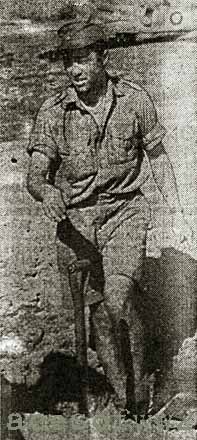 Sportin' his Afrika Corp hat |
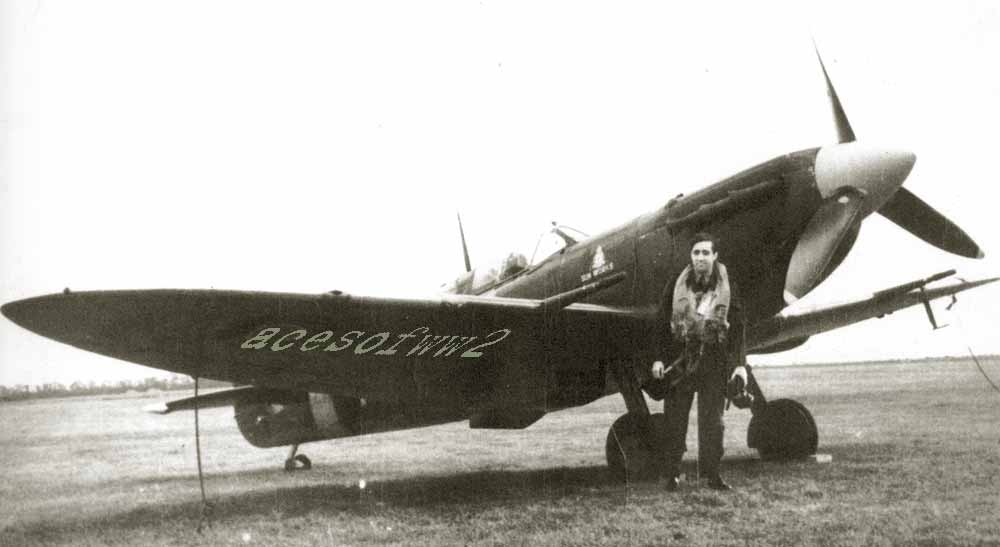
Butch Aikman posing for the press in front of his Spitfire named "SUN WORKS"
_________________________________________________
--- Canadian Aces ---
_________________________________________________
Thanks go out to
Butch's son David for sending me these scans from his dad's scrapbook & Karen, his sister-in-law for getting me in touch with him !
On these pages I use Hugh Halliday's extensive research which includes info from numerous sources; newspaper articles via the Canadian Museum of Civilization Corporation (CMCC); the Google News Archives; the London Gazette Archives and other sources both published and private.
|
Some content on this site is probably the property of acesofww2.com unless otherwise noted.
![]()

